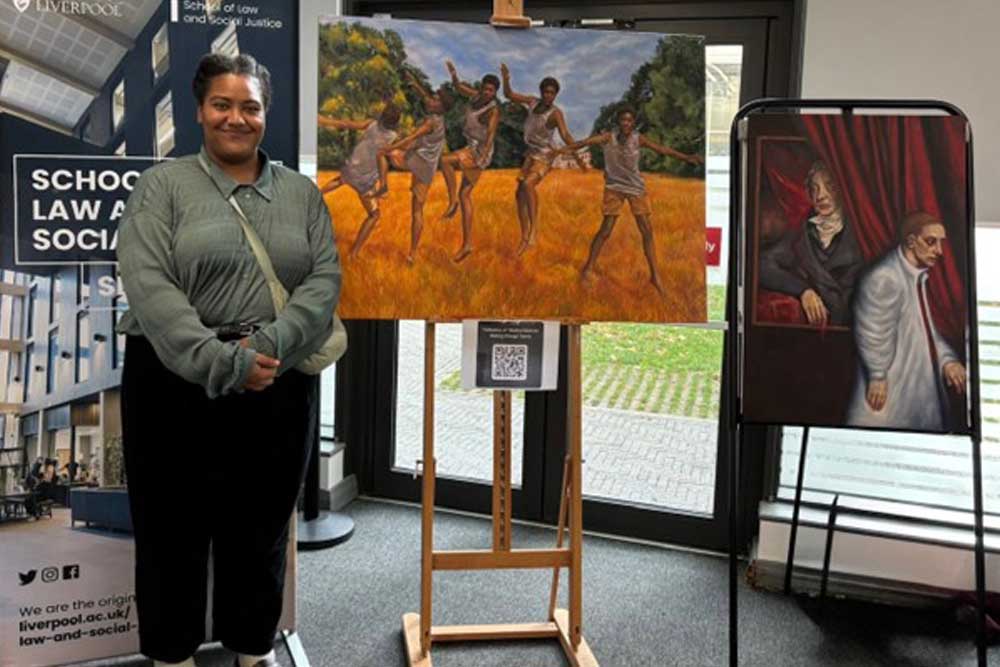
The University of Liverpool’s School of Law and Social Justice hosted a one-day workshop on Monday 3 November, exploring the histories and legacies of ‘scientific’ racism within Liverpool’s heritage institutions.
The event was co-organised by Dr Alexander Scott, Project Curator (International Slavery Museum) and Dr Stephen Kenny, Senior Lecturer in 19th and 20th century North American History (Department of History, University of Liverpool).
The event, supported by the ESRC Festival of Social Science and the National Museums Liverpool (NML) Collaboration Fund, brought together heritage professionals, academics, artists, and members of the public to examine how museum displays and university collections have historically contributed to the formation and dissemination of racist ideologies.
Discussions focused on the ways in which medical, anthropological, and anatomical collections in Liverpool (including objects, books, specimens, and ancestral remains) were used from the 18th to the 20th centuries to promote pseudoscientific racial hierarchies.

The workshop addressed key questions surrounding institutional accountability and representation: asking how heritage organisations respond to these histories, and what steps can be taken to acknowledge the roles that museums and universities played in sustaining racist narratives. Participants also considered how these difficult legacies might be represented responsibly, without perpetuating racial trauma.
The event featured keynote presentations from Dr Rebecca Martin, Research Project Officer at the Pitt Rivers Museum, University of Oxford, and Michelle Peterkin-Walker, a socially engaged artist, activist, and filmmaker. Both speakers shared insights into the ethical challenges of confronting institutional legacies of racism and the importance of collaborative, community-centred approaches to heritage interpretation.
As part of the workshop, attendees also viewed an ESRC Impact funded creative commission by Anna-Louise Loy, whose companion painting They Look Past the Truth is a participatory research response to the troubling legacy of Charles White (1728–1813), a Manchester-born doctor and early medical figure celebrated for his professional achievements, yet responsible for producing and circulating racist myths. Loy’s work reflects on White’s 1799 publication An Account of the Regular Gradation in Man, and in Different Animals and Vegetables, much of which drew on unethical and racist research conducted on Liverpool’s Black population.
Working within the traditions of portraiture, Loy’s painting They Look Past the Truth critically reimagines White’s image, incorporating visual references to Joseph Allen’s 1809 portrait of the physician — to confront how figures like White have been commemorated in medical history and to highlight the lasting impact of their pseudoscientific ideas. Her accompanying painting, Their Joy is the Truth, offers a powerful counter-image that reclaims the narrative, celebrating the strength of those whom White’s work sought to diminish.
Group discussions during the workshop encouraged participants to engage with items from the National Museums Liverpool and University of Liverpool collections, fostering dialogue on how these materials might be reinterpreted in ways that acknowledge their complex histories and contribute to more inclusive narratives. This included visiting the University of Liverpool Library, where Janaya Pickett introduced a range of relevant books and archival documents from the university’s Special Collections.
The outcomes of the workshop will inform ongoing work to develop new displays at the redeveloped International Slavery Museum, supporting efforts to ensure that future exhibitions reflect a critical engagement with Liverpool’s histories of race, science, and empire.